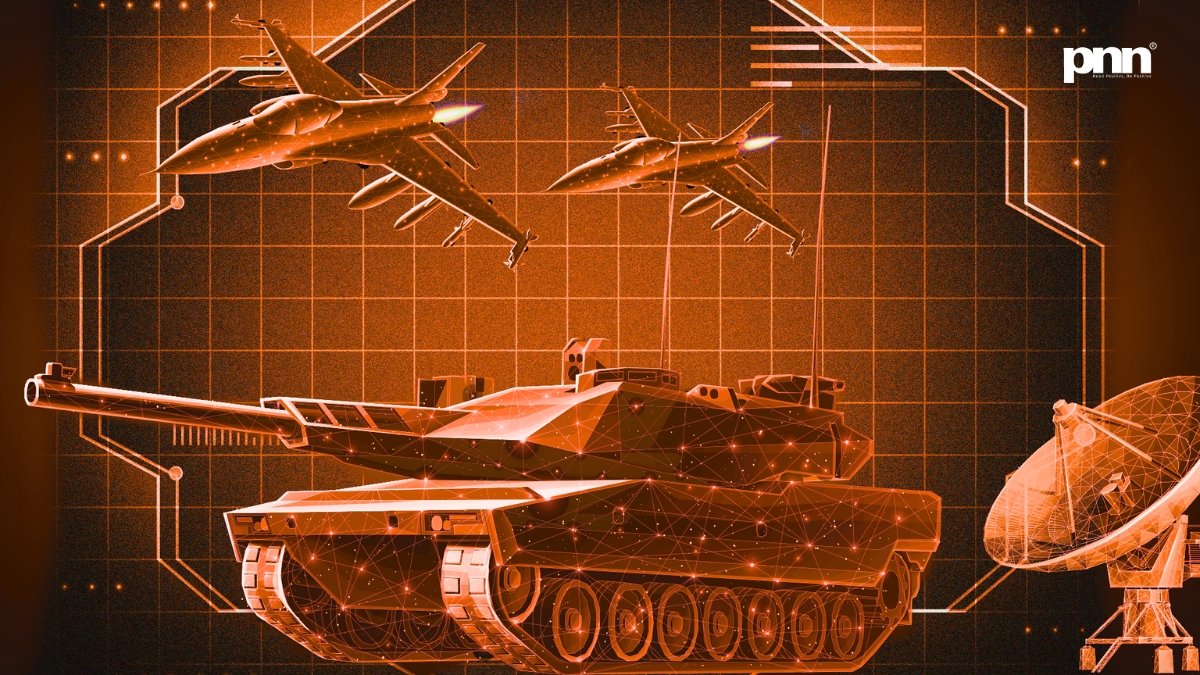New Delhi [India], October 6: India isn’t just building weapons anymore; it’s building the ecosystem to own them. On October 7, Raksha Mantri Rajnath Singh will flip the switch on a national movement to make “Made in India” mean business in the global defence arena. – Defence Manufacturing in India.
Defence Manufacturing in India: Aligning Industry with Mission Self-Reliance
At Vigyan Bhawan, New Delhi, the mood will be less “ceremonial launch” and more “boardroom strategy session.” The National Conference on ‘Opportunities in Defence Manufacturing in the Country’, organised by the Ministry of Defence’s Department of Defence Production, is more than another bureaucratic gathering. It’s a high-stakes convergence of policy, tech, and industry muscle.
The goal? Tight coordination between the Ministry of Defence (MoD) and State/UT governments is a necessary chess move if India is serious about building a homegrown military-industrial complex.
For years, states have chased industrial growth in silos. Now, they’re being pulled into one integrated orbit: defence self-reliance. The conference will hammer out how regional industrial policies and infrastructure can plug directly into the national defence production grid.
Think of it as India aligning its industrial “microchips” into one national motherboard.
Digital Arsenal: Portals That Mean Business
Shri Rajnath Singh will launch two major digital weapons in India’s defence production arsenal:
- The Defence Exim Portal: This one’s about speed and sanity. Export and import authorisations in defence manufacturing have traditionally been a bureaucratic labyrinth. The new portal is designed to streamline the process, making it faster, cleaner, and far less prone to the infamous red tape that has long throttled private sector enthusiasm.
- Srijan DEEP (Defence Establishments and Entrepreneurs Platform): Don’t let the acronym fool you, this platform could be the LinkedIn of India’s defence ecosystem. It’s a digital repository mapping capabilities and products of Indian defence industries, basically, a radar for innovation and manufacturing capacity.
Together, these portals are not vanity projects. They’re infrastructure, digital highways for policy to meet practice.
Policy Arsenal: Publications with Purpose
In addition to the portals, two publications will be unveiled. The first, Aerospace & Defence Sector Policy Compendium of States and Union Territories, is a comprehensive snapshot of where each state stands in defence readiness, industrial clusters, incentives, and growth plans. It’s the scoreboard every investor and policymaker should be watching.
The second, iDEX Coffee Table Book: Shared Horizons of Innovation, celebrates the innovations under the iDEX (Innovations for Defence Excellence) program. It’s less a coffee table ornament and more a tribute to the start-ups, SMEs, and individual innovators driving India’s new-age defence R&D.
States as Strategic Partners
For decades, defence manufacturing sat squarely in the hands of public sector giants like HAL, BEL, and DRDO. States were spectators. That’s changing.
By roping in state and UT industry departments, the Centre is turning local ecosystems into strategic nodes in the national supply chain. Tamil Nadu is building an aerospace cluster. Maharashtra has shipbuilding potential. Uttar Pradesh is investing in a Defence Corridor. The conference isn’t about symbolism, it’s about execution.
It’s a recognition that defence self-reliance won’t be achieved in Delhi boardrooms, it’ll be built in factories from Coimbatore to Lucknow.
India’s Moment to Lead
Globally, defence is big business, $2.4 trillion spent in 2024 alone, according to SIPRI. India, now the world’s fourth-largest military spender, is still one of its top importers. That contradiction is what this push aims to end.
The country’s defence export numbers hit ₹21,083 crore in FY 2023–24, a record high. That’s a 32x jump since 2014. But compared to global giants like the US and France, India’s share remains a blip.
The Defence Exim Portal is part of the solution; cutting paperwork means cutting delays, which means exporters can actually compete on delivery timelines.
When Shri Rajnath Singh says “Atmanirbharta in defence,” he isn’t just selling patriotism; he’s selling a business case. A future where Indian components power jets, tanks, and ships globally, not just within Indian borders.
From Make in India to Make for the World
This conference is also a statement: the shift from “Make in India” to “Make for the World.”
The government’s Defence Production and Export Promotion Policy (DPEPP) 2020 laid the foundation. Now, this conference is on the next floor of that building.
India isn’t chasing manufacturing for manufacturing’s sake; it’s positioning itself as a global design-to-delivery hub. With over 350 private companies now part of the defence supply chain and start-ups innovating across UAVs, cyberwarfare, and space-tech, the timing couldn’t be sharper.
India’s Defence Startups: Quietly Disruptive
The iDEX initiative has already incubated more than 400 start-ups, funding innovations that range from AI-enabled targeting to indigenous drone swarms.
Start-ups like NewSpace Research, Tonbo Imaging, and ideaForge are no longer fringe players; they’re building the future of asymmetric warfare tech.
This conference gives them visibility. More importantly, it aligns state policies to support such ventures with infrastructure, incentives, and fast-track procurement pathways.
Because, let’s face it: innovation needs oxygen, not files that move at glacial speed.
Srijan DEEP: The Network Effect
The launch of Srijan DEEP could quietly be the most consequential part of this event.
Why? Because defence manufacturing is an ecosystem sport. A small gear manufacturer in Coimbatore might not know that a drone start-up in Bengaluru needs exactly what they make.
Srijan DEEP bridges that gap. It maps every product, component, and capability, letting suppliers and buyers find each other faster.
It’s not flashy, but neither is a jet engine’s turbine blade. It’s what keeps the machine running.
The States’ Turn in the Spotlight
Each state is expected to showcase its policies, potential, and existing capacities at the conference.
Expect the big players, Tamil Nadu, Maharashtra, and Karnataka, to highlight their existing aerospace parks. But the real story might come from emerging players like Odisha and Rajasthan, who are aggressively courting MSMEs into defence manufacturing.
When you see bureaucrats using phrases like “synergising industrial policies,” it usually sounds like jargon. But this time, there’s a clear subtext: “We’re done watching other countries make our weapons.”
Challenges? Of Course. But Look at the Direction.
No transformation is clean. There are still issues, procurement delays, testing bottlenecks, limited venture funding, and state-level coordination hiccups.
But here’s the thing: India’s defence sector is finally talking like an industry, not an institution.
And this conference, bringing everyone from defence secretaries to state industrial commissioners under one roof, is a signal that the conversation has matured.
The Shri Rajnath Singh Factor

Shri Rajnath Singh’s stewardship of defence modernisation has been quietly consistent. From boosting defence exports to clearing record numbers of indigenisation projects, he’s been a more pragmatic CEO than politician.
This conference fits that pattern: practical, structured, and results-oriented. No fluff, just focus.
He’s not announcing schemes to grab headlines. He’s launching systems to outlast them.
The Takeaway
By the end of this conference, India’s defence manufacturing landscape will have a clearer roadmap and a few more tools to execute it.
More importantly, the event signals a shift in mindset. The Indian defence ecosystem is no longer asking “if” we can build at scale. It’s asking “how fast.” And that’s the kind of question great nations ask when they stop buying power and start building it.

